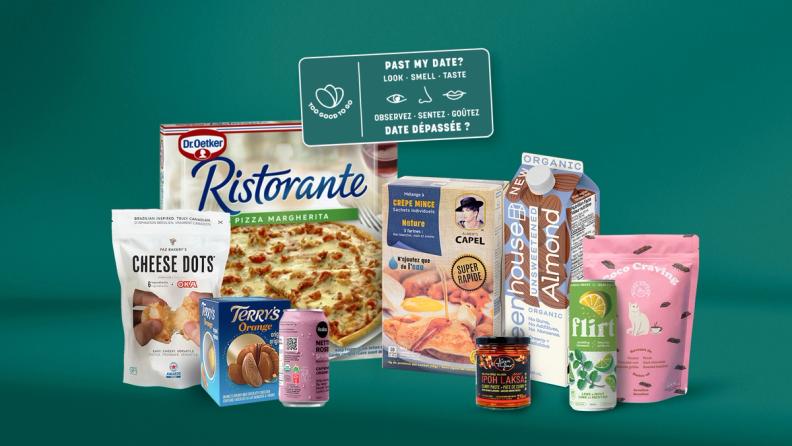Too Good To Go BlogConfused by Best Before Dates? New Research Uncovers How Much Canadians Could Save By Understanding Them Better
Confused by Best Before Dates? New Research Uncovers How Much Canadians Could Save By Understanding Them Better

In Canada, one-quarterof all edible food wasted at home stems from confusion over Best Before dates. Do you know how much this confusion around Best Before dates is costing Canadians every year? To mark the first anniversary of its ‘Look-Smell-Taste'initiative in Canada, Too Good To Go is releasing new research commissioned from Dalhousie University’s Agri-Food Analytics Lab to answer this question — revealing the opportunity Canadian households have to waste less food and save more money at home.
A label Canadians pay close attention to…
Several key insights emerge from this study, based on a representative sample of 1,084 Canadians aged 18 and over. First and foremost, Canadians are particularly attentive, attached, and influenced by Best Before dates.
Only 2% of Canadians say they ignore these dates when shopping. In fact, 78% choose the product with the longest time remaining before its Best Before date. Finally, 63% still rely solely on Best Before dates to decide whether a product is safe to eat.
…but one that remains misunderstood
The study found that 30% of Canadians don’t know the meaning of the Best Before date label, and one in five confuse it with an expiration date — the date the food becomes unsafe to consume.
As the Canadian Food Inspection Agency (CFIA) clarifies, the Best Before date only indicates how long an unopened product will maintain its optimal quality — such as freshness and flavour — when properly stored, not its safety. Products with a shelf life longer than 90 days are not required to carry a Best Before date.
This confusion leads to avoidable food waste. That said, knowledge alone isn’t enough — even among the 70% of Canadians who understand the meaning of the Best Before date, households still throw away over $680 worth of food each year, because it reached its date.
In fact, 63% of Canadians admit they discard food out of fear of food poisoning. This shows how different risk tolerances can influence behaviour, even when people understand the label. On the other hand, 40% of Canadians say environmental concerns motivate them to reduce food waste — and those with higher environmental awareness tend to waste less.
A significant savings opportunity
The average Canadian household estimates discarding about $761 worth of food each year because it reached its date. Of this amount, $246 is discarded because of Best Before dates confusion. So how can we take action to cut this waste — and our grocery bills?
Launched a year ago, Too Good To Go’s ‘Look-Smell-Taste' initiative aims to help consumers trust their senses when products are past their Best Before date or when there are no dates. One year on, more than 7 million product packages in Canada have carried the label, including some from leading and local brands such as Terry’s Chocolate, Greenhouse, Flirt Drinks and Paz Bakery.
When a properly stored, unopened product has passed its Best Before date, take a moment to look at it, smell it, and if everything seems normal, taste it before throwing it away. This simple reflex can make a real difference — less waste, more savings, and a concrete gesture for the planet.
At the same time, the Too Good To Go marketplace app allows Canadians to rescue unsold food (including items nearing or past their Best Before date, in the case of packaged goods) from over 17,000 food businesses across the country. By picking up one Surprise Bag per week, Canadians can save nearly $700 per year on food — while actively helping fight food waste.
Share

